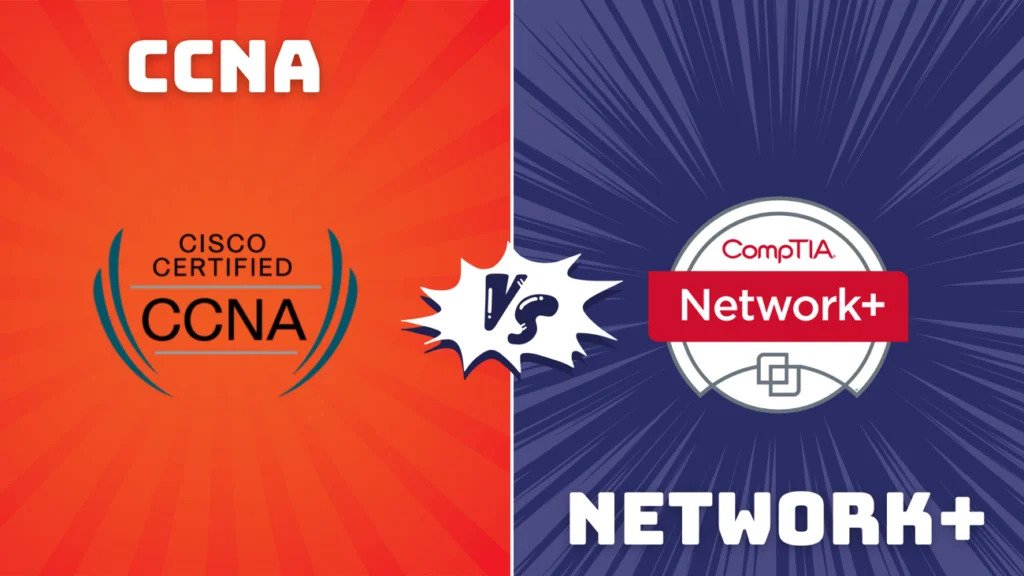Cisco network security is a crucial component of modern IT infrastructure. As cyber threats continue to evolve and increase in frequency, organizations must implement robust security measures to protect sensitive data and maintain network integrity. Cisco offers a comprehensive suite of security solutions designed to address various aspects of network protection.
Key components of Cisco network security include:
1. Access Control Lists (ACLs): These provide granular control over network traffic by filtering packets based on predefined rules. 2.
Firewalls: Cisco’s firewall solutions act as a barrier between trusted internal networks and potentially hostile external networks. 3. Virtual Private Networks (VPNs): These enable secure remote access to network resources by encrypting data transmitted over public networks.
4. Intrusion Detection Systems (IDS): These monitor network traffic for suspicious activities and potential security breaches. 5.
Intrusion Prevention Systems (IPS): Building on IDS capabilities, IPS can actively block or prevent detected threats. 6. Network Monitoring Tools: These provide real-time visibility into network performance and security status.
7. Endpoint Security: Cisco offers solutions to protect individual devices connected to the network. 8.
Cloud Security: As organizations increasingly adopt cloud services, Cisco provides security measures tailored for cloud environments. Implementing a multi-layered approach to network security using these Cisco tools and solutions can significantly reduce the risk of cyber attacks, data breaches, and unauthorized access. Organizations can enhance their overall security posture by adopting best practices in configuring and maintaining these security measures, regularly updating systems, and providing ongoing security training to staff.
Key Takeaways
- Cisco network security is essential for protecting your organization’s data and infrastructure from cyber threats.
- Best practices for securing your Cisco network include regular software updates, strong password policies, and network segmentation.
- Implementing Access Control Lists (ACLs) and firewalls can help control and monitor traffic flow within your network.
- Utilizing Virtual Private Networks (VPNs) for secure remote access allows employees to connect to the network securely from remote locations.
- Network monitoring and Intrusion Detection Systems (IDS) are crucial for identifying and responding to potential security breaches in real-time.
- Cisco security tools and solutions, such as Cisco Umbrella and Cisco Firepower, offer comprehensive protection against a wide range of cyber threats.
- In conclusion, securing your Cisco network requires a multi-layered approach and ongoing vigilance to stay ahead of evolving security threats.
Best Practices for Securing Your Cisco Network
Keeping Devices Up-to-Date
One of the fundamental measures is to ensure that all devices on the network are running the latest firmware and security patches. Regularly updating software and firmware helps to address known vulnerabilities and protect the network from potential exploits.
Controlling Access and Authentication
Additionally, it is essential to enforce strong password policies and implement multi-factor authentication to prevent unauthorized access to network devices and resources.
Segmenting the Network and Encrypting Data
Another best practice for securing a Cisco network is to segment the network into different zones based on the level of trust and sensitivity of the data. This can be achieved through the use of VLANs (Virtual Local Area Networks) and access control lists (ACLs) to control traffic flow between different segments of the network. By segmenting the network, organizations can limit the impact of a security breach and prevent unauthorized access to critical resources. Furthermore, implementing encryption protocols such as SSL/TLS for data in transit and IPsec for secure communication between network devices can help protect sensitive information from eavesdropping and interception.
Implementing Access Control Lists (ACLs) and Firewalls
Access control lists (ACLs) and firewalls are essential components of Cisco network security that help control traffic flow and enforce security policies. ACLs are used to filter traffic based on specific criteria such as source and destination IP addresses, port numbers, and protocols. By defining rules within ACLs, organizations can restrict access to network resources, block malicious traffic, and prevent unauthorized communication between devices.
Additionally, ACLs can be applied at various points within the network infrastructure, including routers, switches, and firewalls, to provide granular control over traffic flow. Firewalls play a crucial role in securing a Cisco network by inspecting incoming and outgoing traffic and enforcing security policies based on predefined rules. Cisco offers a range of firewall solutions, including stateful firewalls that track the state of network connections and application layer firewalls that provide deep packet inspection to identify and block malicious traffic.
By deploying firewalls at strategic points within the network, organizations can create a secure perimeter that protects against external threats and unauthorized access attempts. Furthermore, firewalls can be configured to log and alert on suspicious activities, providing visibility into potential security incidents and enabling proactive threat mitigation.
Utilizing Virtual Private Networks (VPNs) for Secure Remote Access
In today’s interconnected world, remote access to corporate networks is essential for enabling employees to work from anywhere. However, remote access also introduces security risks, as it extends the corporate network beyond its physical boundaries. Cisco offers VPN solutions that enable secure remote access while maintaining the confidentiality and integrity of data transmitted over the internet.
By utilizing VPNs, organizations can create encrypted tunnels between remote devices and the corporate network, ensuring that sensitive information remains protected from unauthorized interception. Cisco VPN solutions support various protocols such as IPsec, SSL/TLS, and L2TP/IPsec, providing flexibility in establishing secure connections based on specific requirements. Additionally, Cisco VPNs can be integrated with multi-factor authentication mechanisms to enhance security and prevent unauthorized access to corporate resources.
By implementing VPNs for remote access, organizations can enable employees to work securely from any location without compromising the integrity of the corporate network. Furthermore, VPNs can be used to establish secure connections between different branch offices, creating a unified and secure network infrastructure.
Network Monitoring and Intrusion Detection Systems (IDS)
Network monitoring and intrusion detection systems (IDS) are essential components of Cisco network security that provide visibility into network activities and help identify potential security threats. Network monitoring tools such as Cisco’s NetFlow provide real-time visibility into network traffic patterns, enabling organizations to detect anomalies and unauthorized activities. By analyzing network traffic, organizations can identify potential security incidents, troubleshoot performance issues, and ensure compliance with security policies.
Intrusion detection systems (IDS) play a crucial role in identifying and mitigating security threats within a Cisco network. Cisco offers IDS solutions that use signature-based detection, anomaly-based detection, and behavioral analysis to identify potential security breaches and malicious activities. By deploying IDS sensors at strategic points within the network infrastructure, organizations can monitor traffic for suspicious patterns and behaviors, enabling proactive threat detection and response.
Additionally, IDS solutions can be integrated with security information and event management (SIEM) systems to provide centralized visibility into security events and streamline incident response processes.
Using Cisco Security Tools and Solutions

Comprehensive Suite of Security Measures
From next-generation firewalls and intrusion prevention systems to advanced malware protection and secure web gateways, Cisco provides a comprehensive suite of security measures to address various aspects of network security.
Real-Time Threat Intelligence and Centralized Policy Management
Additionally, Cisco’s Security Intelligence Operations (SIO) provides real-time threat intelligence and global visibility into emerging security threats, enabling organizations to stay ahead of evolving cyber threats. Furthermore, Cisco’s Identity Services Engine (ISE) provides centralized policy management and enforcement for secure access control across the network.
Advanced Threat Detection and Response Capabilities
Cisco’s Advanced Malware Protection (AMP) provides real-time threat detection and response capabilities to protect against advanced malware and zero-day threats. By leveraging Cisco’s security tools and solutions, organizations can create a robust security posture that safeguards their network infrastructure from potential cyber threats.
Conclusion and Next Steps for Securing Your Cisco Network
In conclusion, securing a Cisco network requires a multi-faceted approach that addresses various aspects of network security. By implementing best practices such as regular software updates, strong password policies, network segmentation, encryption protocols, access control lists (ACLs), firewalls, virtual private networks (VPNs), network monitoring tools, intrusion detection systems (IDS), and leveraging Cisco’s security tools and solutions, organizations can create a robust security posture that protects their network infrastructure from potential cyber threats. As cyber threats continue to evolve, it is essential for organizations to stay vigilant and proactive in securing their Cisco networks.
Regular security assessments, vulnerability scans, penetration testing, and employee training are essential components of maintaining a secure network environment. Additionally, staying informed about emerging security threats and leveraging threat intelligence from reputable sources can help organizations stay ahead of potential risks. In today’s digital landscape, where data breaches and cyber attacks are becoming increasingly common, securing a Cisco network is paramount for protecting sensitive information and ensuring the continuity of business operations.
By following best practices and leveraging Cisco’s security solutions, organizations can create a resilient security posture that safeguards their network infrastructure from potential threats.
If you’re interested in learning more about securing a Cisco network, you may also want to check out this comprehensive CCNA study guide here. It provides in-depth information on various networking topics, including security measures and best practices for Cisco networks.
FAQs
What are the best practices for securing a Cisco network?
Some best practices for securing a Cisco network include implementing strong access controls, regularly updating and patching network devices, using encryption for sensitive data, and monitoring network traffic for any suspicious activity.
What tools can be used to secure a Cisco network?
There are various tools that can be used to secure a Cisco network, including Cisco’s own security products such as Cisco ASA, Cisco Firepower, and Cisco Identity Services Engine (ISE). Other third-party tools such as intrusion detection systems (IDS), intrusion prevention systems (IPS), and security information and event management (SIEM) solutions can also be used to enhance network security.
How can access controls be implemented to secure a Cisco network?
Access controls can be implemented on a Cisco network by using features such as role-based access control (RBAC), access control lists (ACLs), and virtual private networks (VPNs). These controls help restrict access to network resources and protect against unauthorized access.
Why is it important to regularly update and patch network devices in a Cisco network?
Regularly updating and patching network devices in a Cisco network is important to address any security vulnerabilities that may be present in the software or firmware. By keeping devices up to date, organizations can mitigate the risk of potential security breaches and ensure the overall security of the network.
What role does encryption play in securing a Cisco network?
Encryption plays a crucial role in securing a Cisco network by protecting sensitive data as it travels across the network. By using encryption protocols such as IPsec and SSL/TLS, organizations can ensure that data is securely transmitted and remains confidential, even if intercepted by unauthorized parties.













